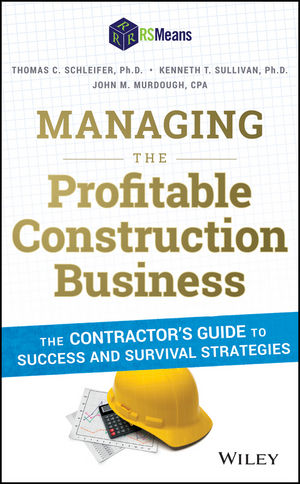New products often aim to offer improved performance, more efficient/economical installation, and greater safety for those using them. Another key consideration is minimizing any negative impact to the environment.

New products often aim to offer improved performance, more efficient/economical installation, and greater safety for those using them. Another key consideration is minimizing any negative impact to the environment. Once in a while, a product is formulated that succeeds in all of these areas. The folks at Chem Link Inc. believe they’ve achieved just that with their new EPDM Single Ply Adhesive. After years of laboratory and field testing, the new adhesive was put to the test in September of 2010 on a commercial building in Three Rivers, Mich.

The Product
Dennis Kelley, Chem Link’s National Brand Manager, noted that the adhesive is not solvent-based or water-based; it’s an advanced polymer formulation that’s new to the roofing industry. “Chem Link’s EPDM Single Ply Adhesive is a solvent-free, odor-free wet lay adhesive that bonds aggressively with most materials,” he said. “It eliminates problems when re-roofing and the safety/health issues with solvents. The single side application makes a quality installation easier and quicker, saving time and money-and gets crews off the jobsite quicker. Using a solvent-free EPDM adhesive also contributes to LEED points for the project.”
Kelley also pointed out some other benefits for the contractor. “The Chem Link EPDM Single Ply Adhesive is solvent-free patented technology,” he said. “It eliminates the problems with solvents and potential fire issues characteristic of most adhesives in use today while also ensuring air quality and worker safety indoors and out. The adhesive is Ozone Transport Commission (OTC) compliant and exceeds all known VOC and regulatory requirements in North America. The buyer gets more for his money because nothing evaporates - or requires hazmat shipping or handling.”
The adhesive’s attributes are part of the company’s mission, noted Kelley. “Chem Link began 20 years ago with a dual vision: (1) Improve the State of the Art, and (2) Do No Harm,” he said. “It has been our goal since 1990 to provide high-performance adhesives and sealants that do no harm to the worker or the environment.”
According to Kelley, systems incorporating the Chem Link adhesive demonstrated values of 195 pounds per square foot in wind uplift tests at Underwriters Laboratories. “The mode of failure was breakage of the insulation board and not an adhesive failure,” he said.

The Contractor
Chenoweth Roofing Inc., headquartered in Three Rivers, Mich., has a longstanding relationship with Chem Link, whose new plant is in nearby Schoolcraft, Mich. Founded in 1980, Chenoweth handles projects throughout the country and installs a variety of commercial systems, including EPDM, TPO, and PVC membranes, hot asphalt built-up, steel, aluminum, zinc and copper roofing, as well as vegetated systems.
The company’s consulting division, Wallace & Associates Testing and Consulting, LLC, provides roof consulting services including infrared and nuclear moisture testing, design services, green roof design, roof asset management and contract administration as well as structural engineering.
“Bill Machemer of Chem Link approached us and asked if we would be interested in using the product is a field test situation,” said Keri Wallace, President of Chenoweth Roofing. “Our experience has been that every Chem Link product performs beyond our expectations, so we were happy to help out.”

The Project
Chenoweth used the adhesive while re-roofing a 1,500-square-foot low-slope roof on an office building in Three Rivers. The scope of work included the removal of two layers of existing roofing, the installation of new 22-gauge steel decking, mechanically fastening 1.5-inch isocyanurate insulation, and installing a fully adhered 60-mil Firestone EPDM roof system. The existing roof had no secondary drainage system, so through-wall scuppers were added during the project.
The tear-off posed some complications. “The existing roof decking is an asbestos composite panel that could not be removed,” Wallace said. “However, portions of the deck were deteriorated to the point that mechanical fasteners would not hold.”
Chenoweth consulted a structural engineer before proceeding with the new decking and roofing system. “After approval the existing roofing was removed, leaving a layer of asphalt roofing which prevented disturbing the asbestos,” Wallace stated. “A new steel deck was mechanically fastened over the existing asbestos composite decking. New insulation and EPDM rubber membrane was then installed.”

Applying the Adhesive
The Chem Link adhesive was applied with a Better Spreader. The crews then used rollers to even out the beads of adhesive. The adhesive requires application on just one surface - the insulation in the field of the roof - so time spent applying the adhesive was cut in half.
“It is a single-side application and the sheet can be laid into the adhesive immediately,” said Wallace. “The adhesive is a moisture cure product that cures through contact with moisture in the air, as opposed to contact adhesives, which require solvents to evaporate into the atmosphere before mating the membrane to the substrate.”
Membrane sheets can be put into place right after the adhesive is applied and easily repositioned if needed. “The sheets can be set in the adhesive immediately, eliminating the waiting period for ‘flash off’ of contact adhesive solvents,” stated Wallace. “If a problem or wrinkle occurs, the sheet can be picked back up, adjusted and re-set in the adhesive without any added work or re-application of adhesive.”
The products low VOCs pose numerous advantages for both the contractor and the building owner, noted Wallace - especially in the case of schools, hospitals and food-handling facilities. “The adhesive is basically odorless and there are no solvents in the adhesive,” she said. “There are no noxious fumes released which can then be picked up by rooftop air intakes and pumped into the building’s interior space. The product is non-combustible, which means the entire roofing process is a safer one.”
Chenoweth does not allow any smoking to occur on any roof at any time, but there’s no worry about combustion from other sources with the Chem Link adhesive. “Sparks can still occur from cutting or other operations and static electricity generated by movement of sheet membranes is always a fire danger any time flammable solvents are in use,” Wallace said. “Also, in some areas of the nation there are regulations concerning the release of VOCs on construction projects.”
The job went smoothly and passed Wallace’s post-installation inspection with flying colors. Of course, only time will tell, but Wallace expects the roof system to offer excellent long-term protection. “We have installed millions of square feet of Firestone EPDM membrane over the past 25 years with no product failures,” she said. “We have been using Chem Link products since they opened their doors and the products always exceed our expectations.”
Riding the Green Wave
Wallace finds that more and more building owners are asking about environmentally friendly roof systems, and she believes it is the contractor’s job to educate them about roof systems and their environmental impact. “In general the public is totally uninformed of the actual contents of the products utilized in roofing,” she noted. “It really is up to the contractors to inform buyers of the environmentally friendly aspects of the individual products proposed or used.”
It helps when the greener option also offers superior performance, and that’s where Chem Link believes it’s come up with a better mousetrap.
“It is a common lingering belief in the building industry that there is a ‘green penalty’ when using an environmentally safe product that will compromise performance, cost or ease of use,” said Kelley. “Although there was truth in this idea in earlier times, technologies and polymer chemistry have advanced to a point where the performance, cost and installation of environmentally safe adhesives/sealants will compete favorably without a penalty. We understand that well documented ‘greenwashing’ makes it difficult to differentiate new and legitimate products from the rest. That is why we strive to maintain close contact with and provide technical expertise for contractors and specifiers.”
For the contractor, the key is an efficient, high-quality installation, asserts Wallace. “The biggest mistake I see contractors make is evaluating products on price,” she noted. “Many contractors will use a lower-cost material which requires more labor. The cost of the product is simply that - one single cost. Labor, however not only incurs the payroll but also taxes, insurance, fuel and transportation of workers, lodging and meals out of town, etc. - the list goes on and also becomes exponential as it grows.”
“And of course, keep your quality high,” she concluded. “One callback can eat up the net profit of a job and in some cases cost you a customer.”


Report Abusive Comment